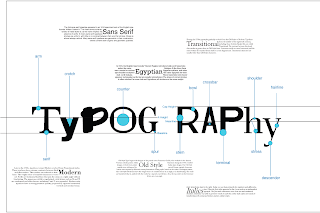Importance of typography is unrivaled when it comes to graphic designing. Typography is a exacting part without which every design seems incomplete. but, what you do need is a common sense that matches the great typo for your design (because every type cannot be use for any propose of Design ).
Typography is great thing that many designers take for decided and shift their focus on the more vibrant aspects of design like the image or layout etc. and to be renowned that typography can be one of the factors in your work that will be directly noticed and appreciated in your assortment of works ,when applying for jobs in the field, particularly when it come to advertising industry.








.jpg)

